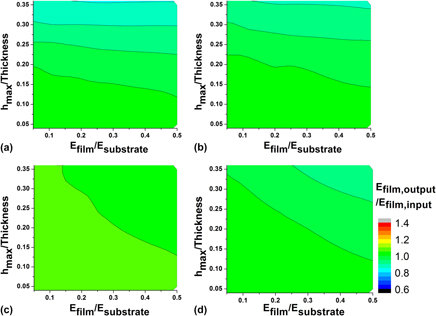Article contents
Models for nanoindentation of compliant films on stiff substrates
Published online by Cambridge University Press: 11 June 2015
Abstract

Nanoindentation is an effective approach for measuring mechanical properties of nanoscale films coated on substrates, yet results obtained through the classic Oliver–Pharr model require additional consideration due to the existence of a “substrate effect” when the film is much more compliant than the substrate. In this study, different models for removing this substrate effect are compared, with focus on the Gao model, the Saha–Nix model, and the Hay model and the use of a direct finite element (FE) approach is discussed. Validity of these models is examined using load–displacement data obtained from simulated indentation of an elastic–plastic film in FEs. It is found that the performance of the analytical models varies significantly with different testing parameters, including ratio between film modulus and substrate modulus (Ef/Es), indenting ratio (hmax/film thickness), and yield strain. Choices of using a nanoindentation model to process experimental data should be made according to estimated indentation depth and modulus difference between film and substrate. An example of applying substrate removal models to experimental data is also shown.
Keywords
- Type
- Articles
- Information
- Copyright
- Copyright © Materials Research Society 2015
Footnotes
Contributing Editor: Susan B. Sinnott
References
REFERENCES
- 10
- Cited by




